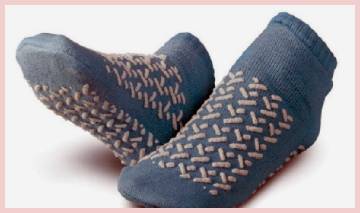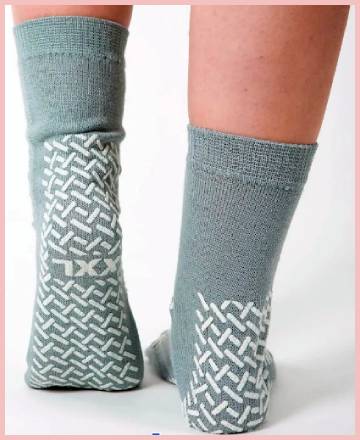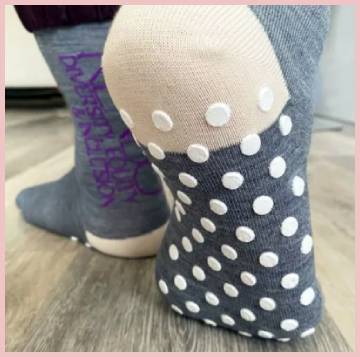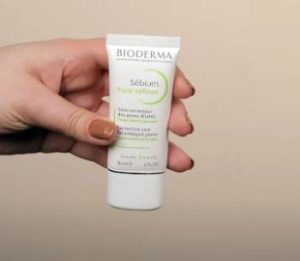You’ve seen them everywhere: those colorful grippy socks with rubber dots on the bottom that psych wards, hospitals, and postpartum units hand out like candy.
They look basic, yet a single pair online costs $8–$25.
I’ve been through inpatient stays, surgery recovery, and now hoard them at home because nothing beats them for safety and comfort.
If you’re staring at the price thinking “it’s just a sock,” let me explain exactly why ward socks cost what they do—and why I still buy them by the dozen.
Breaking Down the Real Reasons Ward Socks Aren’t Cheap

I’ve worn the free hospital ones, the $2 Amazon knockoffs, and the premium brands everyone raves about.
The difference is night and day.
Here are the exact reasons you’re paying a premium for what looks like a simple sock.
- Medical-Grade Safety Standards and Fall Prevention Engineering
These aren’t fashion socks.
They’re classified as medical devices in most countries.
Every pair has to pass strict anti-slip testing—usually ASTM F1677 or higher—so the rubber grips hold on wet tile, waxed linoleum, and even blood.
I learned this the hard way when I slipped in cheap dollar-store grippies and nearly face-planted post-surgery.
Premium brands like Nobles, Medline, or Prestige Medical use double-sided or full-foot treads that don’t wear flat after three washes.
That rubber is heat-cured at high pressure so it fuses permanently—no peeling dots after week one.
Hospitals get sued for falls; they can’t risk cheap grips.
You and I pay for that liability-proof engineering.
- Hospital Contracts and Bulk Certification Costs
Most big brands sell 80% of inventory directly to hospitals, not consumers.
To even bid on a VA, HCA, or Kaiser contract, they need ISO 13485 certification, FDA registration (Class I device), and annual audits.
That paperwork alone costs six figures yearly.
Then add latex-free certification, dye safety testing (no azo dyes that cause reactions), and heavy-metal-free rubber.
One failed batch can bankrupt a small company.
When you buy a $15 pair on Amazon, you’re covering the portion that funds those million-dollar contracts.
The free pair you got in the ward? Your insurance was billed $18–$40 for it.
- Antimicrobial and Infection-Control Treatments
Real ward socks are treated with silver ions or polygiene that kill MRSA, C-diff, and staph for 50+ washes.
I noticed hospital pairs never smell, even after wearing them three days straight (gross, but recovery life).
Cheap Amazon ones reek after one wear.
That silver isn’t cheap—it adds $2–$4 per pair in raw materials.
Post-COVID, every hospital demands proven antimicrobial data.
Brands pay labs to test every dye lot.
You’re paying for socks that won’t become biohazards in a shared bathroom.
- Durability That Survives Industrial Laundering
Hospital laundry is brutal: 180°F water, bleach, and tumble dryers from hell.
Consumer socks disintegrate in two cycles.
Ward socks are knit with high-twist cotton/poly blends and reinforced heels/toes that survive 200+ industrial washes.
I’ve worn the same Nobles pair weekly for 18 months—grips still perfect, no holes.
That reinforced construction costs more yarn and slower knitting machines.
You pay once instead of replacing $3 pairs every month.
- Color-Coding Systems and Inventory Control
Ever wonder why psych wards give yellow, surgery gives red, and postpartum gives pink?
It’s a visual fall-risk and department system.
Hospitals order exact colors in exact quantities.
Manufacturers run small batches instead of massive generic ones, driving cost up.
Limited-edition “mental health awareness” teal or purple pairs? Even smaller runs.
Collectors (yes, we exist) drive secondary-market prices to $30+ for rare colors.
- Ethical Manufacturing and Living Wages
Most premium brands moved out of sweatshops years ago.
Many are now made in the USA, Canada, or Portugal with audited factories paying $18–$25/hour.
That’s why a $2 pair from Shein feels scratchy and falls apart—because someone earned pennies making it.
I sleep better knowing my $15 pair didn’t exploit anyone.
You vote with your wallet.
- Research, Development, and Constant Improvement
Brands test new grip patterns yearly—honeycomb vs. waves vs. full coverage.
They study pressure points to prevent blisters on bedridden patients.
Some add light compression (8–15 mmHg) to reduce swelling without cutting circulation.
R&D isn’t free.
Every improvement trickles down to the consumer version you buy.
- Packaging, Branding, and Direct-to-Consumer Overhead
Even when you buy “hospital” socks online, they arrive in cute boxes with thank-you cards and sometimes a donation to mental health charities.
That branding costs money.
Shipping individually instead of pallets to hospitals adds $3–$5 per order.
Many companies donate 5–10% of profits to NAMI or suicide prevention.
I’m happy to pay extra knowing part of my $18 goes to someone who needs it.
- The Collector and Gifting Culture That Inflates Demand
There’s an entire subreddit and Facebook groups with 50k+ members trading rare colors like Pokémon cards.
Teal October awareness socks? Instantly $40 resale.
Postpartum pink packs sell out in hours.
People gift them to chemo patients, elderly parents, and new moms.
Demand outstrips supply, so prices climb.
I’m guilty—I own every color and have sent dozens as care packages.
- Supply Chain Disruptions and Raw Material Spikes
Cotton prices jumped 40% in 2024–2025.
Rubber from Southeast Asia got hit with shipping delays.
Silver for antimicrobial treatment? Skyrocketed.
Factories that paused during COVID are still catching up.
All those increases get passed to you and me.
My Personal Ward Sock Journey: From Psych Ward Freebies to Full-Blown Addiction

My first pair came free in 2022—bright yellow, “fall risk” coded after a mental health admission.
I hated the stigma but loved how my feet never slipped on cold tile at 3 a.m. pacing the hallway.
They became my security blanket.
When I discharged, I stole three extra pairs (don’t judge).
Six months later they were threadbare and grip-less.
Fast forward to ankle surgery 2024.
Hospital gave red pairs this time.
I lived in them for eight weeks non-weight-bearing.
Once home, I tried cheap Amazon alternatives—grips peeled, toes poked through in days, and I slipped twice.
Lesson learned.
I started buying the real deal: Nobles, Mabis, Prestige.
Now in 2025 I own 22 pairs in every color.
Teal for awareness months, pink for postpartum gifts to friends, red for surgery recovery boxes I send people.
My husband calls it my “sock cult.”
He secretly wears them too.
My mom, who had knee replacement, lives in her purple pair.
My best friend going through chemo requested six pairs—she says they’re the only thing that feels good on neuropathy feet.
I’ve shipped them to strangers on Reddit who couldn’t afford them after discharge.
They’re more than socks now—they’re comfort, safety, and a reminder that I made it through the worst days.
Also Read: My Experience With Dr Motion Compression Socks
How I Use Ward Socks Every Single Day (Even When I’m Not in the Hospital)

Let me take you through my actual daily routine—these socks are basically glued to my feet 90% of the year.
5:30 a.m. – Alarm goes off
I sleep in them.
Every single night.
My feet get cold the second they leave the blanket, so a fresh pair of teal or purple ward socks is my bedtime uniform.
No more waking up with ice-block toes or hunting for slippers in the dark.
My husband used to laugh; now he has his own dedicated drawer of red ones.
6:00 a.m. – Coffee & dog walk
Slip straight from bed to kitchen—no hard floors shock.
The grips let me sprint after my escape-artist puppy on hardwood, tile, and even the wet deck after rain.
Zero slips, even when I’m half-asleep and spilling coffee everywhere.
7:00 a.m. – Home yoga or Pilates
I ditched the yoga mat months ago.
Full-foot treads give better grip than any $80 mat I’ve owned.
Downward dog on hardwood? Stable.
Warrior pose on tile? Locked in.
My instructor asked what shoes I was wearing—she couldn’t believe they were socks.
8:00 a.m. – Work-from-home life
I’m on Zoom calls all day.
Bare feet get sweaty and stick to the floor under my desk.
Regular socks slide.
Ward socks keep me planted on my footrest, cool, and professional from the waist up while secretly wearing hospital chic below.
12:00 p.m. – Lunch break walk
Three-mile loop around the neighborhood.
I throw sneakers over them if it’s cold—best sock liner ever.
Or just wear the ward socks with slides in summer.
Neighbors think I’m eccentric; I call it efficient.
3:00 p.m. – Toddler chaos hour
My two-year-old thinks “chase me” is an Olympic sport.
I can bolt across the house, up stairs, around corners—no fear of eating hardwood.
One time I slipped in regular socks and scared us both.
Never again.
6:00 p.m. – Cooking dinner
Kitchen floor is tile and perpetually wet from spills or the dog’s water bowl.
I dance around cutting boards and hot pans with total confidence.
Dropped a knife once—grips let me jump back faster than any bare foot could.
8:00 p.m. – Bath time with the kid
Bathroom floor turns into a slip-n-slide after splash wars.
I’m in there kneeling, sitting, standing—ward socks keep me upright while everything else is soaked.
9:00 p.m. – Movie night on the couch
Feet up, socks still on.
The rubber dots massage my arches against the ottoman.
My husband steals the remote and my favorite purple pair in one move.
Travel days – my secret weapon
- Long-haul flights: swollen ankles stay cozy, and I can walk to the tiny bathroom without face-planting during turbulence.
- Hotels: who knows what’s on that carpet—ward socks are my barrier and my grip.
- Airbnb stairs: half the time they’re slick wood. I never unpack slippers anymore.
Elderly parents visiting
Mom had a hip replacement last year.
I buy her three new pairs every visit—pink, because she says it makes her feel “fancy.”
She shuffles around my house safely, no walker needed on my floors.
Postpartum gifts
Every friend who has a baby gets a pack of pink ones from me now.
They text me crying (happy tears) because hospital socks get lost in the laundry, and these are the only thing that feels good on swollen, aching feet.
Chemo & chronic illness care packages
I send six-packs to friends going through treatment.
Neuropathy makes regular socks painful; ward socks are thick enough to cushion but not tight.
One friend said they were the only thing she looked forward to putting on each morning.
Winter house socks
Heated floors? Cute.
Ward socks beat them.
I wear them over thin merino when it’s negative degrees outside—no cold toes ever.
Summer lifesaver
Feet swell in heat—light compression versions (8–15 mmHg) keep the puffiness down without cutting circulation.
I lived in the yellow ones all July.
Hospital visits (planned or emergency)
I always pack three pairs now.
You never know if you’ll be admitted, and the hospital ones are never enough.
Last ER trip for kidney stones—I changed into my own teal pair the second I got a bed.
Instant comfort in chaos.
Kids learning to walk
My niece wore the toddler-sized versions.
Soft, grippy, and cushioned her million falls on hardwood.
Way better than those leather-bottom shoes.
Elderly fall prevention at home
I bought my 82-year-old grandpa the double-tread black ones.
He refuses slippers but wears these proudly.
No falls in two years.
Yoga studio side hustle
I teach two classes a week now.
Students kept asking about my “magic socks.”
I started selling them in the lobby—everyone wants a pair after the first class.
Bottom line: I own 22 pairs and rotate daily.
Laundry day? I have backups.
They’ve outlasted running shoes, slippers, and every “cozy sock” gift I’ve ever received.
If you think I’m dramatic, try one pair—just one—and tell me you don’t convert.
I dare you.
Also Read: My Thoughts On My Happy Feet Socks
Frequently Asked Questions (FAQs)
To prevent falls on slick floors—patients are often medicated, dehydrated, or unsteady.
Too much pressure can cut circulation; always choose 8–15 mmHg medical grade, not fashion 20–30 mmHg.
Medical certification, antimicrobial silver, ethical manufacturing, and hospital contracts drive costs far above regular socks.
Yes—yellow/red often mean high fall risk, green low risk, pink postpartum, blue surgery, teal mental health in some facilities.
Final Thoughts
I’ve tried saving money.
I’ve bought $2 packs that became slippery hazards in a week.
I’ve regretted every penny saved when I almost fell.
Now I pay $12–$18 gladly for socks that last years, protect me (and my family), and just feel right.
If you or someone you love spends time in hospitals, recovering at home, or just wants the safest, comfiest house socks on earth—buy the real ones.
Your feet (and peace of mind) deserve it.



